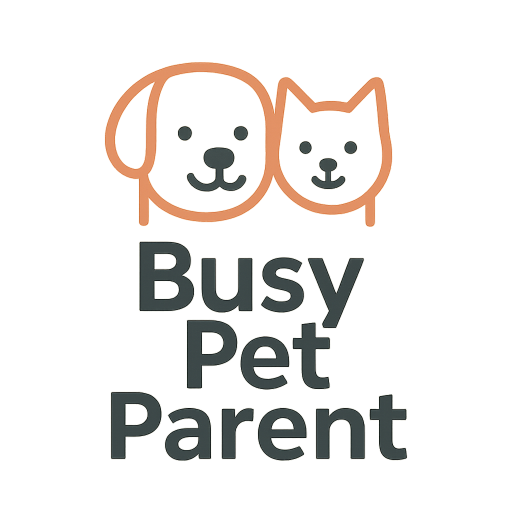
The Ultimate Apartment Pet Dental Care Guide: Simple Tips for Cleaner Teeth and Fresher Breath
When you live in a small apartment with your cat or dog, every sniff, lick, and yawn happens in close quarters. And if your pet’s breath isn’t fresh—or worse, if they’re dealing with hidden dental disease—you’ll notice fast. That’s why apartment pet dental care isn’t just about hygiene. It’s about quality of life, comfort, and long-term health for your pet and your space.
Dental disease affects an estimated 80% of adult dogs and 70% of cats by age 3, according to a 2020 PubMed study. In tight spaces, where pets often share your couch, your bedroom, and your air, the effects of poor dental care multiply fast.
The good news? You don’t need a grooming table or giant bathroom sink to give your pet a cleaner, healthier mouth. This guide will walk you through apartment-friendly tools, simple habits, and smarter routines that protect your pet’s teeth—without making your home a mess.
1. Why Apartment Pets Are at Higher Risk for Dental Disease
Apartment pets face some unique challenges when it comes to oral health. Limited outdoor time, less chewing stimulation, soft flooring that dulls natural tooth abrasion, and smaller food storage often lead to softer, processed foods that don’t promote dental strength.
Many pet parents also skip regular brushing because of tight bathroom layouts or lack of time—and it adds up. For dogs and cats in small homes, even minor plaque buildup becomes noticeable fast. Worse breath, inflamed gums, or brown tartar can sneak up quickly if prevention isn't part of the routine.
If your pet mostly eats canned food or soft treats, make sure you're balancing that diet with some kind of oral care support. Our budget pet food guide explains how to make smart food swaps that support both nutrition and dental health.
2. Know the Signs of Dental Trouble Before It Gets Serious
Most dental disease in pets starts quietly—but it doesn’t stay that way. By the time you notice a strong odor, your pet could already have gum inflammation, tooth pain, or even infection. In a small space where you’re close to your pet all day, it’s even more important to spot these early red flags:
• Bad breath that lingers or worsens over time
• Yellow or brown tartar buildup on teeth
• Red or bleeding gums, especially when eating
• Dropping food, favoring one side, or chewing oddly
• Pawing at the mouth or rubbing face on furniture
• Swelling under the eyes (can signal tooth root issues)
3. Build a Simple Daily Routine (That Doesn’t Involve Wrestling)
In a perfect world, every pet parent would brush their dog or cat’s teeth daily. In reality? That’s not always practical—especially in a small apartment with a squirmy pet and a packed schedule. The key is consistency over perfection.
Pick a time that works with your routine—like after the evening walk or before bed—and commit to one dental care habit per day. That could be offering a dental chew, applying a pet-safe oral spray, or wiping teeth with a disposable finger pad. Just a few seconds of attention daily helps remove debris, reduce bacteria, and reinforce healthy habits over time.
4. Try No-Brush Solutions That Actually Work
If brushing your pet’s teeth sounds like a battle you’re not ready for, you’re not alone. Fortunately, there are plenty of low-stress alternatives that still protect your pet’s oral health:
• Dental wipes: Gently remove plaque from the surface of the teeth
• Water additives: Mixed into your pet’s bowl to fight bacteria and freshen breath
• Oral sprays or gels: Applied directly to gums to reduce buildup and odor
• Chews and dental toys: Encourage abrasion that removes soft tartar naturally
For best results, choose products approved by the Veterinary Oral Health Council (VOHC), which tests for effectiveness and safety. Look for the VOHC seal when shopping for chews, rinses, and other aids.
5. Use Space-Saving Tools That Don’t Require a Sink
Brushing your pet’s teeth in a small apartment bathroom can be cramped, slippery, and chaotic. Instead, opt for tools that work anywhere—whether you're on the couch, floor, or a corner of the bed.
Finger brushes, dental wipes, and pre-filled oral swabs are perfect for quick cleanups without needing water or rinsing. Store them in a labeled bin or pouch next to treats or grooming supplies so they’re always within reach. Keeping everything visible and compact is the easiest way to stick to your routine.
6. Avoid DIY Hacks That Could Hurt Your Pet
Some popular pet “dental hacks” online sound helpful but can actually do more harm than good. For example, baking soda is abrasive and can upset a pet’s stomach if swallowed. Coconut oil may reduce odor short-term, but it won’t remove tartar or bacteria. And essential oils? Many are toxic to cats and unsafe for dogs when used improperly.
Stick with products made specifically for pets and approved by veterinary experts. When in doubt, consult your vet before applying anything to your pet’s teeth or gums—especially if they’re already dealing with irritation or infection.
7. Know When It’s Time to See the Vet
Even with great daily habits, most pets still need occasional professional dental cleanings. In apartments, it’s easy to overlook subtle signs of oral pain because your pet’s behavior may not change drastically in such a familiar space.
Watch for swollen gums, reluctance to eat harder food, or excessive drooling. These may be signs of gingivitis, abscesses, or tooth decay. If you're unsure whether something's normal, snap a photo of your pet’s mouth and send it to your vet. When in doubt, schedule a checkup—most dental issues are easiest to treat early and can prevent expensive complications later.
Final Thoughts
In a small apartment, it’s easy to let pet dental care slide—especially when space, time, and tools are limited. But a little effort every day goes a long way. With the right no-fuss habits and gear, you can keep your dog or cat’s teeth cleaner, their breath fresher, and your shared space more comfortable for both of you.
Whether you’re just starting to introduce a routine or looking to upgrade from chews to vet-grade tools, the most important step is consistency. Clean mouths lead to healthier pets—and a much more pleasant home.
Frequently Asked Questions
How often should I clean my pet’s teeth in an apartment setting?
Ideally, you should clean your pet’s teeth daily—but even 3–4 times per week can make a big difference. Use wipes, chews, or sprays that fit your space and routine. Consistency matters more than perfection.
Is bad breath always a sign of dental disease?
Not always—but it’s one of the most common signs. Persistent bad breath, especially when paired with gum discoloration or plaque, may indicate an underlying issue. If in doubt, check with your vet.
Are dental chews enough if I live in a small space?
Dental chews are a great supplement, but they’re not a full substitute for active cleaning. Combine them with wipes, sprays, or vet visits for the best results—especially if brushing isn’t realistic in your setup.
What should I avoid using on my pet’s teeth?
Never use human toothpaste (it often contains xylitol), baking soda, or essential oils. These can be toxic or harmful to pets, especially cats. Always use products labeled as safe for animals.
Do indoor cats need dental care too?
Absolutely. Indoor cats are just as prone to dental disease as dogs—sometimes even more, since issues often go unnoticed longer. Use a mix of dental treats, oral rinses, and checkups to stay ahead.

Join the Busy Pet Parent Newsletter!
Get easy routines, time-saving tips, and the latest gear reviews—delivered straight to your inbox.
Perfect for busy pet owners, apartment dwellers, and anyone who wants a happy, healthy companion (without the stress).
Exclusive guides & checklists
Product recommendations & deals
No spam—unsubscribe anytime!




